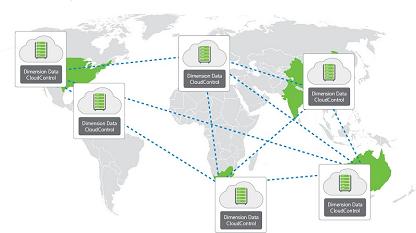As St Jude raged around the UK last month felling trees and bringing commuter trains to a standstill, a collective sigh could be heard: cloud naysayers finally admitting defeat.
Whether or not businesses had a mobility or cloud strategy, those tech-savvy employees across the country armed with BlackBerries, tablets and Dropbox accounts were comfortably and productively working away, and their organisations were thankful. For many businesses, it will take these 90mph winds to blow in the seeds of change.
Businesses are adopting cloud services, albeit more cautiously than anticipated. Much has been written about vendors hyping cloud services, and adoption rates not living up to the propaganda. Indeed TechTarget’s Cloud Pulse Survey found that public and private clouds have reached the same level of market penetration at around 25%.
Adoption is moving in the right direction, though, and research from ISG found that 10-15% of total IT outsourcing spending was on cloud services in the third quarter of 2013, double that in the same quarter last year. 90% of the 50 CIOs interviewed by consultancy Alsbridge earlier this year on the topic say they are already using cloud services.
Those businesses that have already made, or plan to make, the move to cloud computing cite many different strategic objectives: achieving cost-savings, scalability and flexibility, and devolving management are just a few. However, one business driver that I suspect companies hadn’t anticipated is their employees’ extraordinary desire for cloud storage.
Often users get overlooked in technology research. In fact, technology forecasters underestimate the power of the people and without asking users what they’re actually doing, we’re only getting half the story. I can say with confidence that, whether you like it or not, your staff are using the cloud. Perfect for storing music and photos, users love the streamlined, synchronised experience of being able to access the same stuff from any device. And not just at home – why not save that document you haven’t finished in the office on your iCloud, so you can carry on working on it when you get home?
Still need convincing? Let’s look at the numbers. Dropbox now has 175 million users – up from 5 million in 2010. Apple’s iCloud has an eye-watering 300 million users, and Microsoft’s SkyDrive has 200 million users. GoogleDrive’s figures are harder to come by but are likely to be in the hundreds of millions.
Aaron Levie, chief executive of secure content-sharing business Box, hits the nail on the head: “We are still in the very, very early stages of enterprise adoption of these tools. Every new device category is an accelerant to our growth rate. It is forcing IT buyers to think about what is the next generation of their IT strategy.”
Our employees, and their devices, are what’s really driving IT strategy, cloud in particular. If this is the early adoption stage of consumer cloud storage, it’s quite literally going to be huge.
Whether the piece of work saved on a personal cloud belongs to your corporate lawyer or accounts assistant, whilst their intentions are honourable, your business’ data is at risk. Securing employees’ current use of the cloud for data storage could, and should, be one of the main factors influencing your business’ cloud migration.
A private or hybrid cloud solution places the ball in your court and removes risk: you carry out an applications audit and select the applications you want to migrate; you identify which applications are the most critical; and you provide secure access, pairing staff with the applications they need to fulfil their roles.
Going back to St. Jude: ensuring your business functions as normal in conditions which are anything but, is clearly not just about staff having access to cloud-based applications. Nor is it about organisations migrating a single business-critical application to the cloud and thinking it constitutes disaster recovery. In the CloudPulse Survey mentioned earlier, only 28% of businesses questioned had disaster recovery applications in the cloud.
There are a huge number of considerations in both business continuity planning and disaster recovery planning. But the cloud has a significant part to play here. For a start, you could actually get to your Business Continuity Plan – if it’s stored on your business’ servers and you access it from your desktop but can’t get to your desk, it’s not much good. Data stored in a virtualised environment with secure VPN access is going to be a pretty safe bet, so if your servers go up in flames, your data won’t.
Now we find ourselves in a chicken-and-egg situation similar to the rise of broadband use in the early 2000s. We questioned which had more influence on broadband take-up – broadband use at home, or broadband use at work? Superfast broadband enabled such a great broadband experience at home that it was expected, if not demanded, in the workplace.
Now, consumer use of cloud is driving business cloud migration. And when it comes to ensuring your business triumphs during adversity and your employees keep calm and carry on, they have a point. There is no better, more affordable solution than cloud computing.













